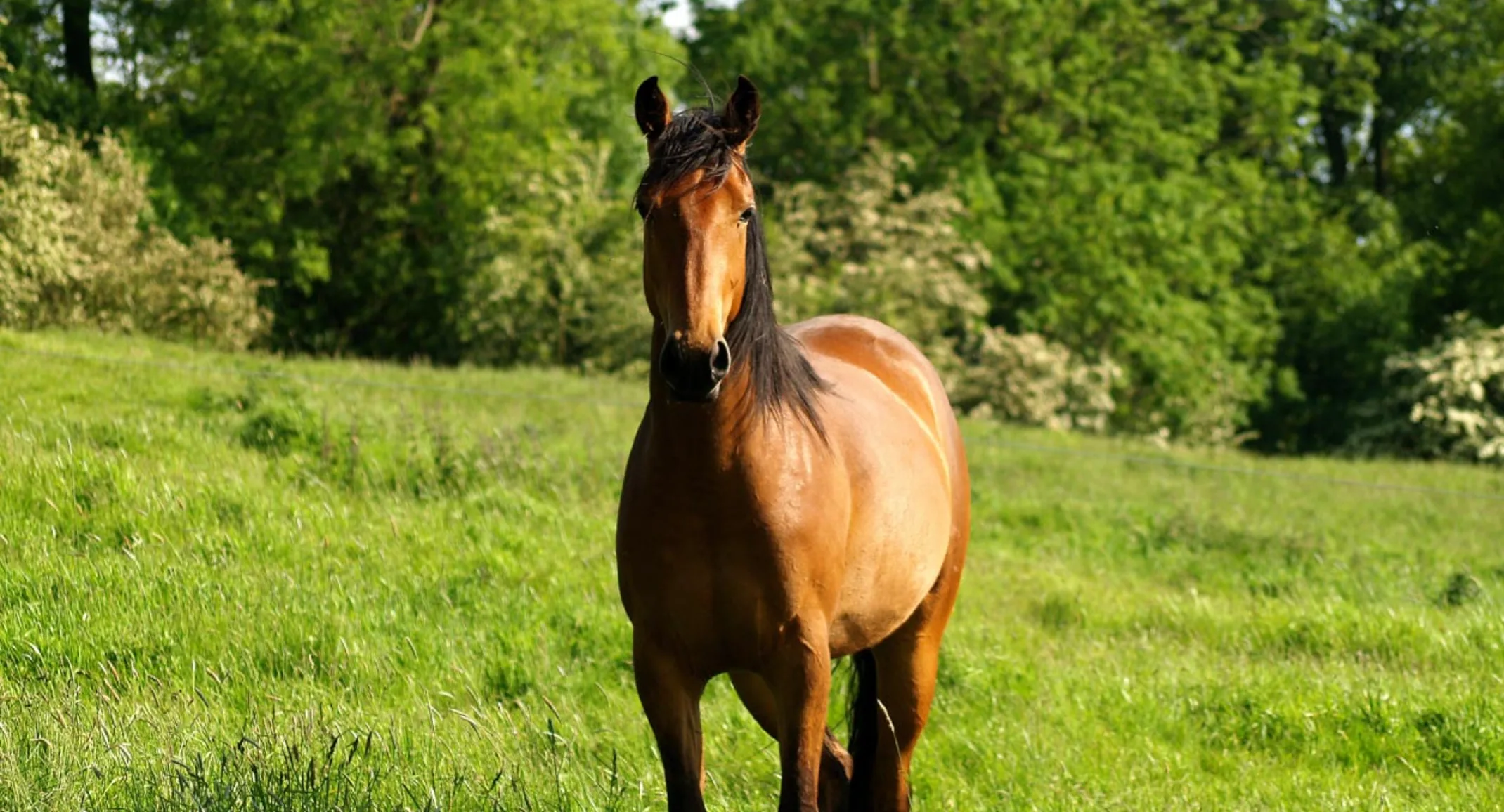Colic
General

Colic… it’s a word that makes even the most experienced horseperson cringe. As almost all people involved with horses know, colic can be a life-threatening disorder that can and does affect all ages and breeds of horses. By definition, colic means abdominal pain of any cause and does not denote any particular abnormality that is causing the pain. Any number of situations, such as gas, an impaction, sand accumulation in the intestine, or an intestinal twist, can cause a horse to experience an episode of colic.
Because colic can be life-threatening, it is extremely important to recognize the signs as early as possible to give your horse the best chance of recovery. Common signs of colic include: inappetance or reluctance to eat; lethargy or depression; lying down or rolling excessively; looking back at the flank; kicking or biting at the belly; standing stretched out as if to urinate but not producing any urine; not passing an adequate amount (or any) manure; violent thrashing/rolling on the ground or throwing itself around the stall. If you notice any of these signs in your horse, it is imperative that you contact your veterinarian immediately. Although the signs may be subtle and mild, it is always best to have the horse examined early to detect any severe problems so that they can be treated promptly. It is recommended that you do not administer any medication to your horse before speaking to your veterinarian. Although he may direct you to give the horse a dose of Banamine (flunixin meglumine) to reduce the horse's discomfort, he may prefer to examine the horse before any drugs are given. Banamine is a strong NSAID (nonsteroidal anti-inflammatory drug) that may mask signs of even severe pain and make it difficult to determine the cause of the colic.
So what should you do until the veterinarian arrives? First, take your horse’s vital signs – temperature, pulse, capillary refill time, and respiratory rates. Your veterinarian will want to have this information when you speak to him on the phone. Second, administer Banamine only as directed by the veterinarian. Next, remove all hay and grain, and move the horse to stall or small paddock so that you can monitor him for manure production and pain. Walking the horse may be advised by your veterinarian to help stimulate intestinal motility. Only do this if the horse's behavior is deemed safe enough to allow walking.
If he is violent, move him to an area in which he is unlikely to be injured and await the veterinarian’s arrival. When the veterinarian arrives, he will perform a complete physical examination on the horse to attempt to diagnose the source of the colic pain. This exam will most likely include a rectal palpation & nasogastric (stomach) tubing. If no drugs have previously been given, he will probably administer a dose of Banamine and a sedative/tranquilizer if necessary. The rest of the treatment will depend on what is causing the colic pain. If the cause is an impaction, a treatment of electrolytes, mineral oil, and water will probably be given by stomach tube. A gas colic calls for more walking and possibly an anti-spasmodic drug. If the suspected cause is an intestinal twist or displacement (twisted gut), surgery will be recommended.
Prompt treatment gives your horse the best chance of surviving and recovering from a bout of colic, but prevention is also important. In fact, preventing colic can be easier than treating it. Provide fresh, clean, unfrozen water at all times to your horses. Feed them in a way and an area that limits the amount of sand they pick up with their feed. Ideally, do not feed hay off the ground and place mats under feed tubs so that spilled grain does not mix with the dirt. Deworm regularly. Limit grain intake unless the horses truly need it to maintain their weight. Although these recommendations will not prevent all bouts of colic, they are major steps in preventing certain causes of colic.
Michelle Egli, DVM
Delmarva Equine Clinic
